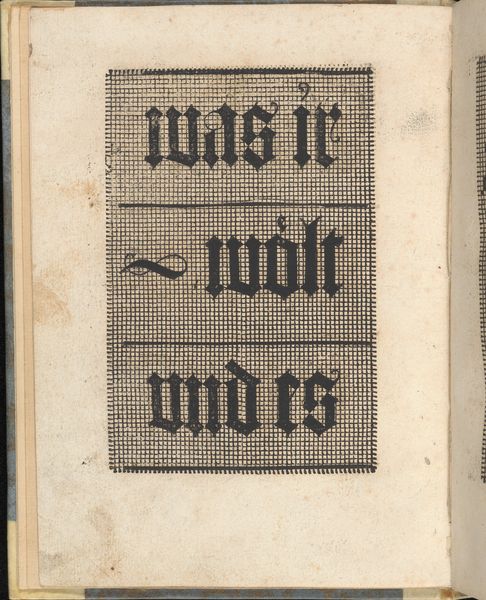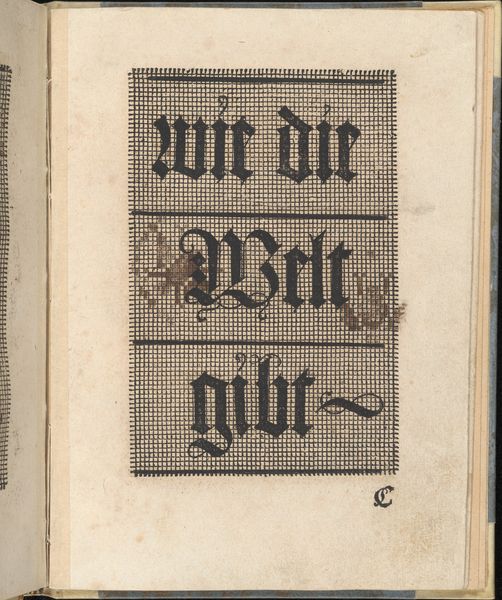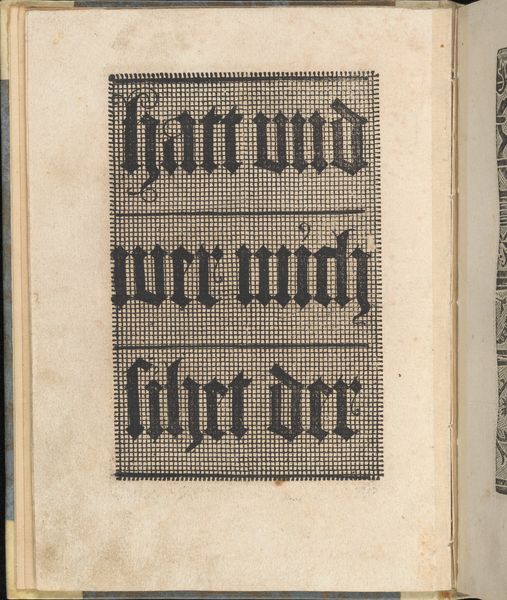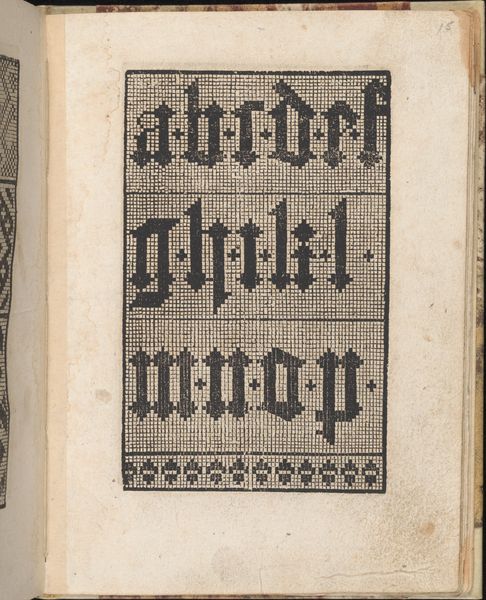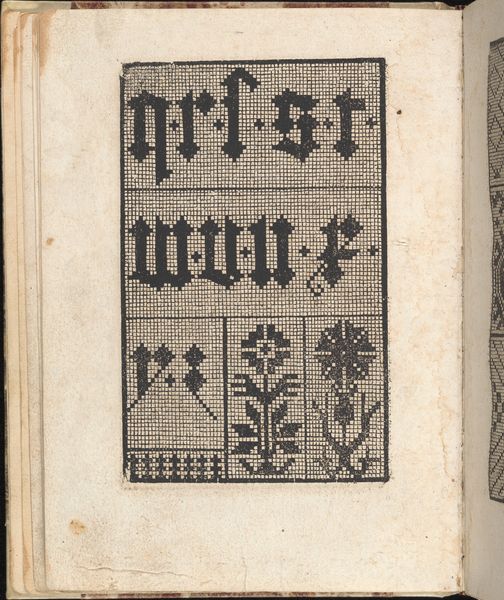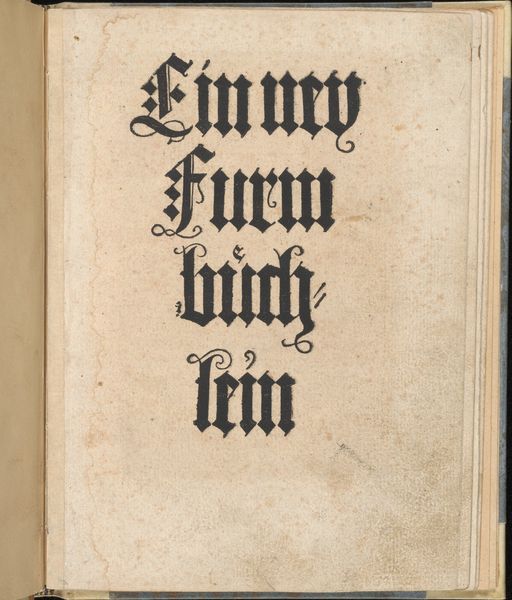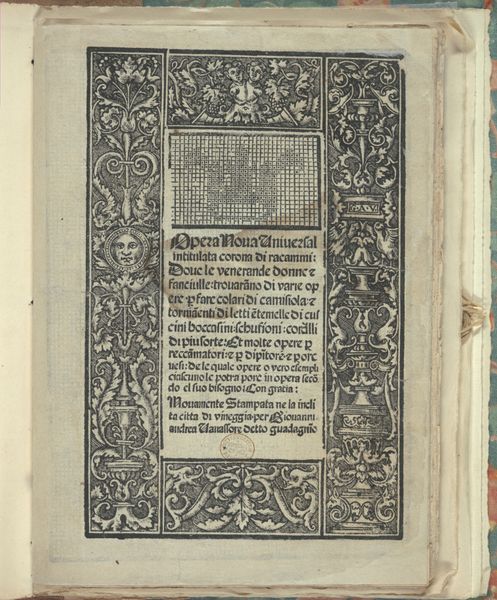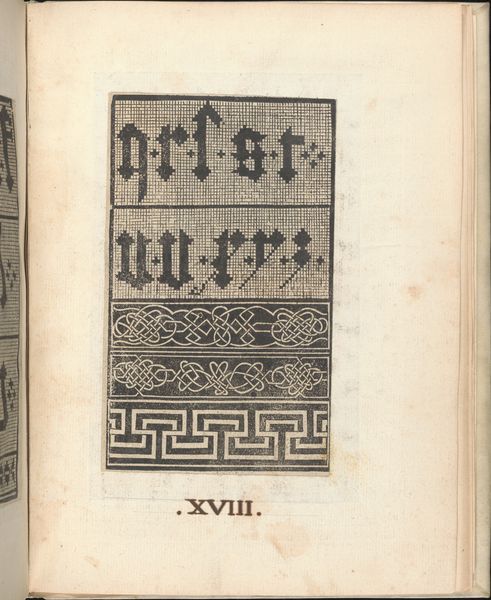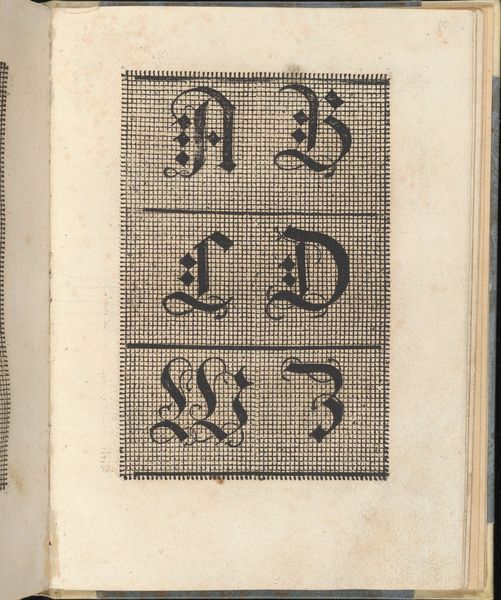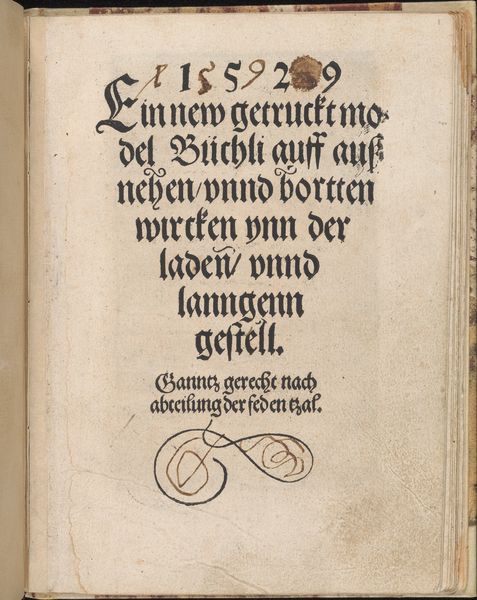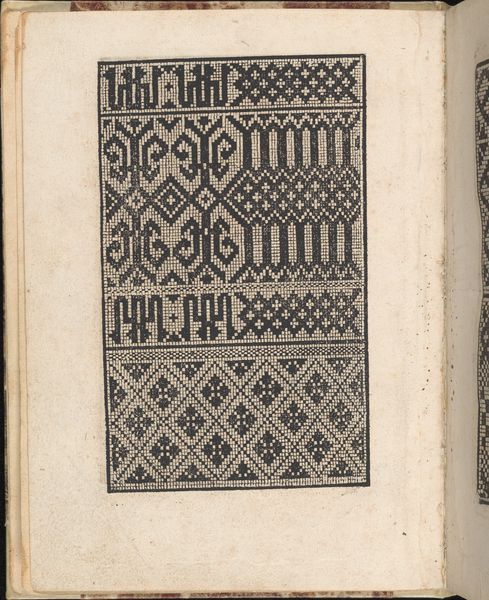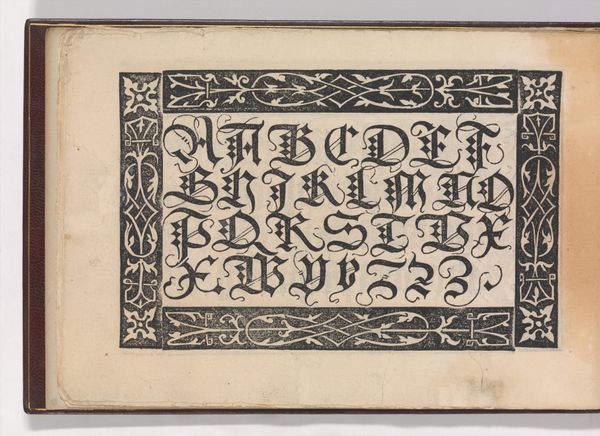
Ein ney Furmbüchlein, Page 6, recto 1520 - 1530
0:00
0:00
drawing, print, textile, paper, typography
#
drawing
#
medieval
# print
#
textile
#
paper
#
form
#
typography
#
geometric
#
geometric-abstraction
#
line
#
calligraphy
Dimensions: 7 7/8 x 6 1/8 in. (20 x 15.5 cm)
Copyright: Public Domain
This page from "Ein ney Furmbüchlein," was made by Johann Schönsperger the Younger around the early 16th century using woodcut on paper. The dense, graphic quality of the blackletter type against a gridded background results from the nature of woodcut printing, where the areas around the design are carved away, leaving the image to be inked and pressed onto the page. Look closely, and you can see how the grain of the wood itself may have influenced the final print. This wasn't just about making beautiful letters; it was a craft deeply embedded in the rise of printing and distribution of knowledge. Schönsperger’s design reflects the increasing demand for printed materials during the Renaissance. It served as a template for craftsmen, and a medium for wider social literacy. By focusing on the way this page was made, we can appreciate how craft and design intersect. It is through the materiality of the woodcut that we come to understand the social and cultural significance of printed books during this pivotal era.
Comments
No comments
Be the first to comment and join the conversation on the ultimate creative platform.
